Excerpts from Jim Conrad's
Naturalist Newsletter
from the July 31, 2016 Newsletter issued from Hacienda Chichen Resort beside Chichén Itzá Ruins; limestone bedrock; elevation ~39m (~128ft), N20.675°, W88.569°; central Yucatán state, MÉXICO
ACALYPHA BUSH
An eight-ft-tall shrub leaned from a dense roadside tangle of vines and bushes, reaching for sunlight. Below, you can see a branch of it:
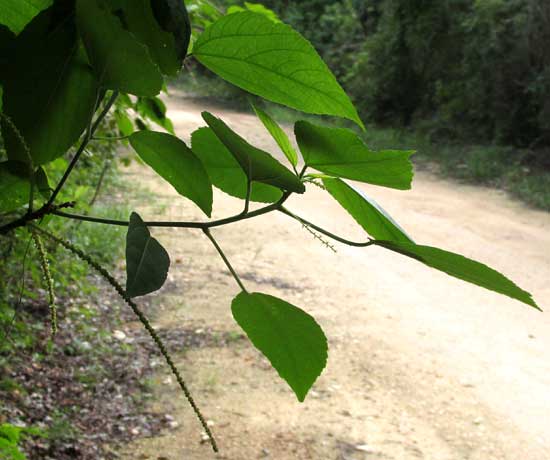
What caught my attention about that branch was its long, slender flowering spikes issuing from right behind the leaves. Up close the long spikes revealed themselves as bearing nothing but widely separated male flowers at different stages of development, each mature blossom having no corolla but with a tiny, four-parted calyx subtending several stamens topped with white, pollen-producing anthers, shown below:
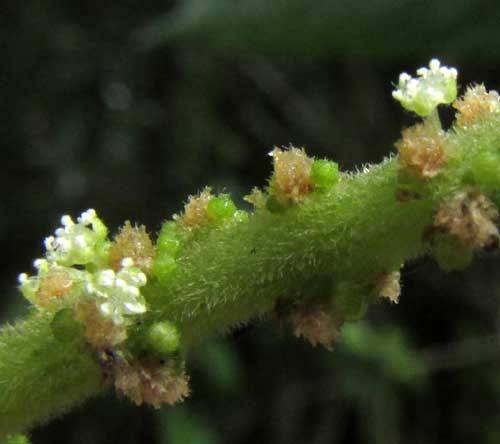
On the same plant, much shorter and less conspicuous flower spikes bore only female flowers with prettily branching, slender styles, shown below:
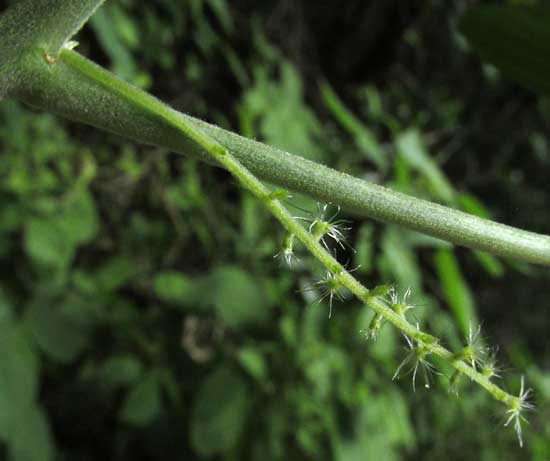
The shrub's long-petioled leaves, with blades broad as a hand, were shallowly and attractively toothed, as shown below:
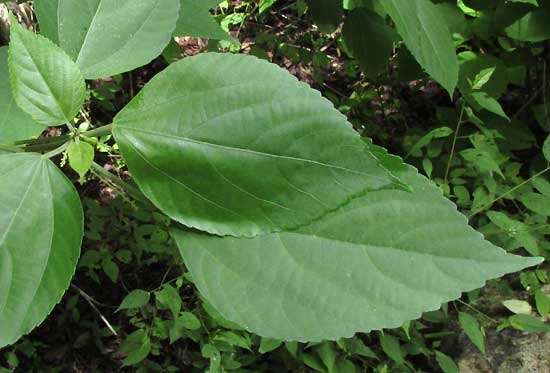
Once the above details were noted, I realized that two weeks earlier, deep in the nearby forest, I'd photographed the same species, but with its flowers more advanced. I'd been unable to identify it then, so you never heard about it. Now, below, you can see that much smaller and less robust, head-high plant in such deep shade so that a flash was needed:
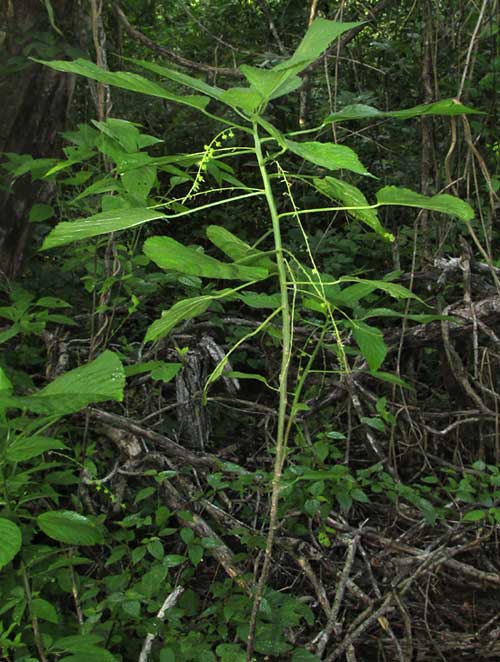
On that plant the male flowers had matured and fallen off. The more mature female flowers consisted of enlarging, three-lobed, spiky ovaries with their styles withering, shown below:
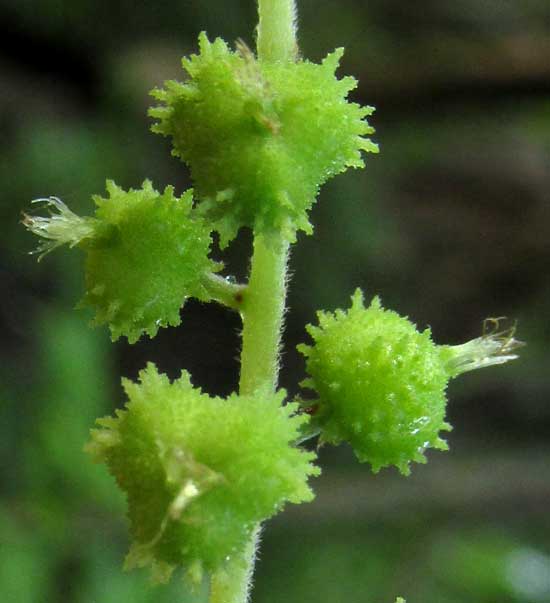
A leaf from that deep-shade bush is shown for comparison with this week's plant below:
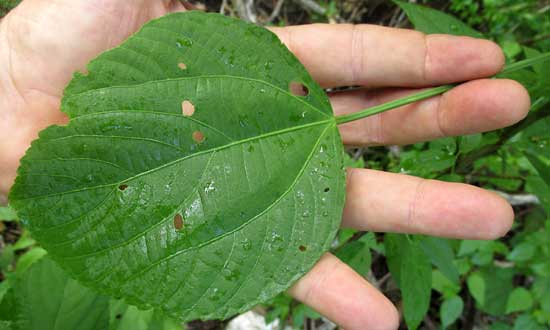
This is ACALYPHA VILLOSA, described as a forest understory shrub occurring in a variety of forest types in southern Mexico and nearly all the rest of tropical America. At first I didn't recognize these plants as an Acalypha because I expect members of that genus to have their female flowers subtended by conspicuous leafy bracts, as in the case of Acalypha leptopoda, a common shrub around the hut, and whose leafy bracts are easily seen at www.backyardnature.net/n/11/110220ae.jpg
I didn't see such bracts on this week's plants, and still don't, despite the literature saying that they're there.
Acalyphas are members of the big Euphorbia or Poinsettia Family, the Euphorbiaceae. One can imagine small animals relishing the three small seeds inside each three-lobed ovary. Seeds are harder to come by in deeply shaded forest than in sunny areas.